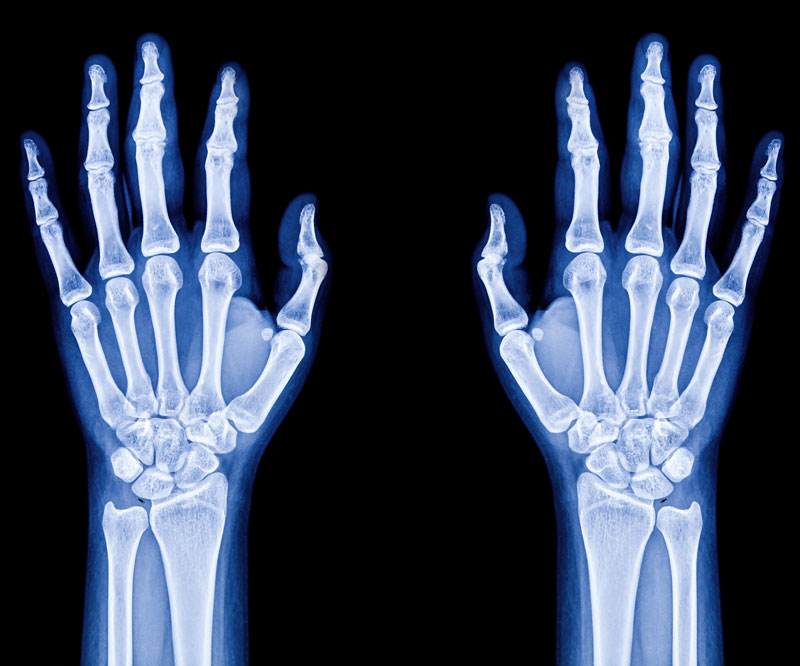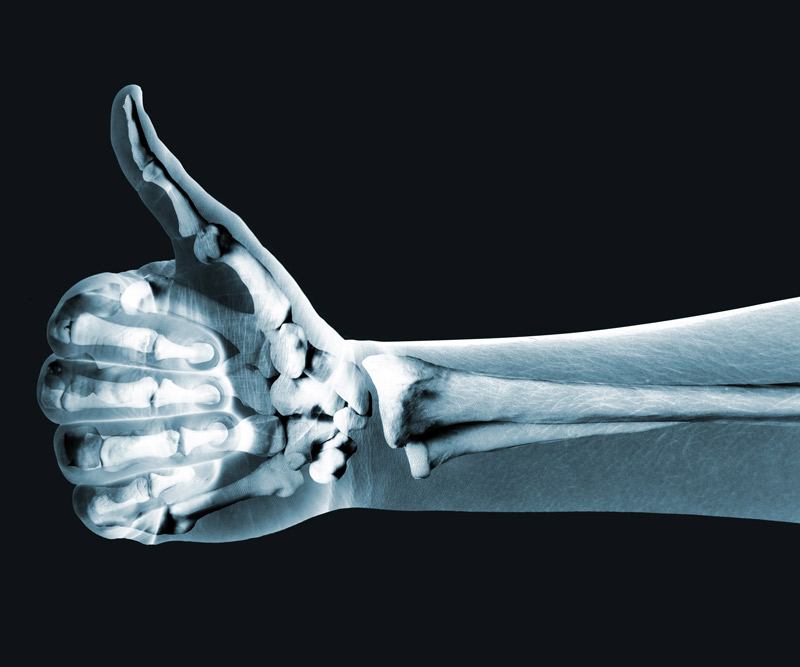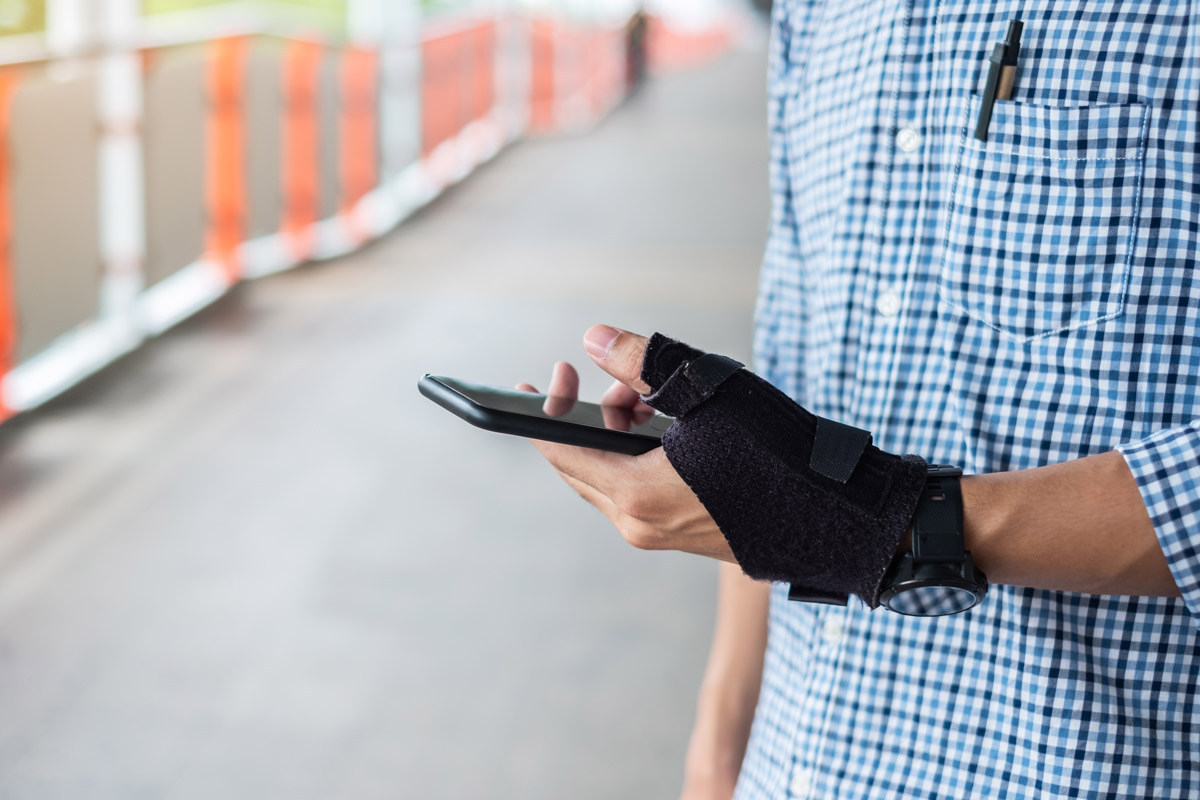
Is "Selfie Wrist" a Real Condition? How Technology Impacts Hand Health
The hand plays such a vital role in everyday life and human interaction.
We use our hands constantly, so it comes as no surprise to hear that pain from overuse is common.
However, with increased technology literally right at our fingertips, we are noticing an increase in the following three hand issues.
1. De Quervain's Tenosynovitis
The Tech Culprit: Texting, cell phone use
What is it?
Tendonitis, or inflammation and irritation of one of the thumb tendons as it passes through a sheath (think of a tunnel) near the wrist joint.
What are the symptoms?
Pain usually presents in the thumb-side of the wrist, sometimes radiating all the way up to the thumb.
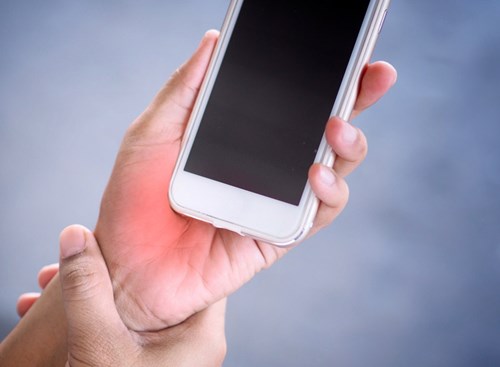
How do you get it?
Excessive use increases friction/rubbing of the tendon against the sheath. This action eventually leads to inflammation and pain, especially if the wrist is held in an awkward position.
Traditionally, we see a lot of new moms get this wrist pain from holding a baby.
We also see it in people who work in day care and preschools.
Patients with thyroid disease or diabetes are also at an increased risk.
More recently, we have seen an uptick in younger patients who have this pain and feel it’s exacerbated during texting. A study done recently showed that after making college students text a long paragraph, about 50% of the participants experienced De Quervain's symptoms.
Prevention
Use it less! Resting is the key. Wrist splints can be used to keep the wrist in a neutral position (thus preventing awkward wrist positions), and thumb splints can be used at night to fully immobilize the thumb to give it a good night’s rest.
Treatment
If splinting and resting have failed, nonsteroidal anti-inflammatory drugs (i.e., ibuprofen) can provide temporary relief from pain and inflammation. If the pain is interfering with daily life, you should see a hand specialist to discuss potential treatments, such as a steroid injection or even surgery.
2. Carpal Tunnel Syndrome
The Tech Culprit: Typing
What is it?
A compression of a nerve as it passes the wrist joint through a protective sheath/tunnel.
What are the symptoms?
Numbness and tingling of the hand, especially the thumb, index and middle finger. People will notice hand weakness when the symptoms become long-standing and severe.
Most people start complaining of nighttime symptoms that wake them up at night – they often have to "shake it out" to feel better.
Most daytime symptoms occur while driving.

How do you get it?
The protective sheath (the transverse carpal ligament) thickens as we get older, which decreases the space for the nerve to travel through, eventually leading to compression. Think of a foot on the garden hose.
Typing doesn't actually cause carpal tunnel – there have been many studies to prove that.
However, excessive typing can exacerbate pre-existing symptoms.
Many anatomical studies have shown that changes in wrist position – hyperflexion or hyperextension – decreases space where the nerve travels through.
Thus, if the keyboard is in a position that extends or flexes your wrist while you type, it can push on the nerve and exacerbate carpal tunnel symptoms.
People with thyroid disease or diabetes are again at an increased risk for developing this condition.
Prevention
The key to preventing symptoms is to keep your wrist in a neutral position, so office ergonomics is very important!
For nighttime symptoms, a wrist brace that places your wrist in a neutral position often does the trick.
Treatment
If office ergonomics and wrist bracing at night don't alleviate the symptoms of carpal tunnel syndrome, then you should consider discussing with your primary care physician (PCP) or seeing a hand surgeon for advice.
They may recommend a cortisone injection for temporary relief of the symptoms, or they may discuss getting additional nerve studies with a neurologist.
Finally, carpal tunnel surgery is always an option as it is both safe and effective.
3. Index/Pointer Finger Joint Arthritis
The Tech Culprit: Mouse/trackpad use, typing
What is it?
Loss of cartilage in the finger joints. This usually is the DIP (distal interphalangeal) joint, or the fingertip joint.
What are the symptoms?
Pain in the finger.
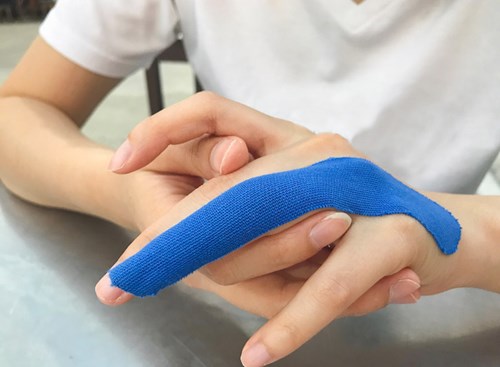 How do you get it?
How do you get it?
The cause of arthritis, whether it's in the hand, knees or hips, is not very well understood. It is multifactorial – a combination of genetics, environmental exposures and use.
So, like carpal tunnel syndrome, using the mouse or trackpad does not cause arthritis. However, it can exacerbate pre-existing symptoms.
Prevention
There have been a lot of studies on vitamin supplements to prevent arthritis, but none of them have good evidence supporting their use.
As far as symptoms DIP joint arthritis are concerned, decreasing overall use, or switching fingers or even switching hands occasionally can often help symptoms.
Treatment
Symptomatic management with acetaminophen or anti-inflammatory medication is usually the first line against finger joint arthritis.
If that's not adequate, then you can see a hand surgeon and they may offer a cortisone injection for temporary relief.
Surgery for DIP joint arthritis usually involves a fusion procedure.
If you would like to learn more about hand health or schedule an appointment with a specialist at the Hawaii Pacific Health Bone & Joint Centers, visit HawaiiPacificHealth.org/BoneandJoint.
Published on: February 5, 2020



